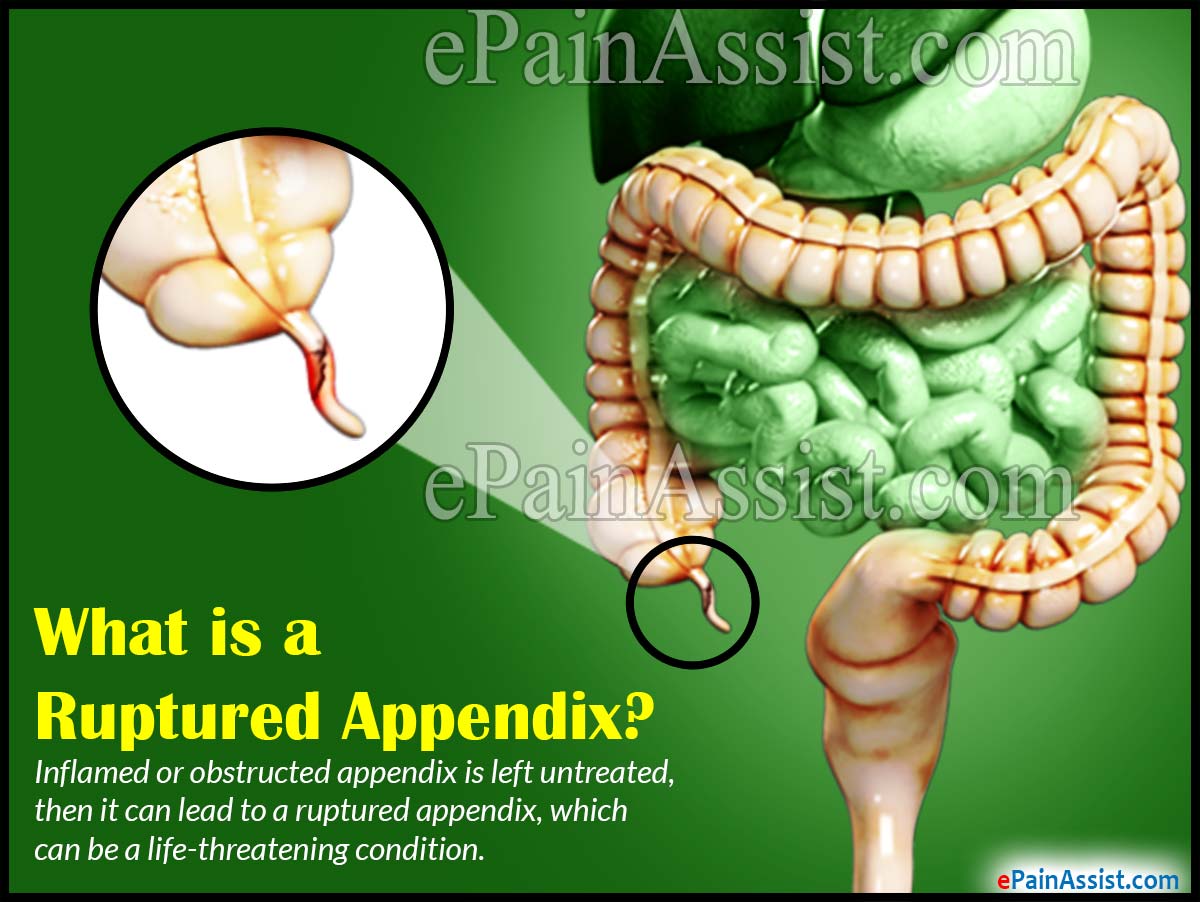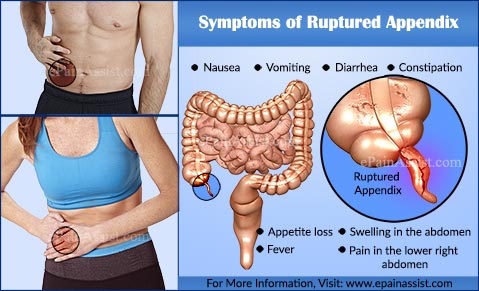What is a Ruptured Appendix?
The large intestine in our body is made up of different parts, such as colon, rectum, anal canal, and cecum. Our appendix is a tube like structure, which is shaped like a finger, about 4 inches in length and is attached to the cecum. The exact function of the appendix is not clear, but according to studies, it may help in beneficial bacteria recolonizing the gut following an acute infection. Like any other body part, the appendix can also become inflamed and filled with pus. This condition is known as appendicitis. This can happen if an abdominal infection spreads to the organ, or if there is an obstruction in the internal part of the appendix. Patient experiences sharp pain in the right lower abdomen, which is the location of the appendix. There is worsening of pain with deep breaths, movement, sneezing and coughing. If the inflamed or obstructed appendix is left untreated, then it can lead to a ruptured appendix, which can be a life-threatening condition. Appendectomy is a procedure in which the appendix is removed and it usually doesn’t cause any health problems.

Treatment of a ruptured appendix comprises of draining the pus, antibiotics and removing the appendix.
Causes of Ruptured Appendix
If the appendicitis or obstruction in the appendix is not treated promptly, i.e. within 24 to 72 hours after the symptoms appear, then it can result in a ruptured appendix. When there is infection or obstruction in the appendix, there is multiplication of the bacteria which normally reside in the appendix. So, when the appendix becomes inflamed, it also becomes filled with pus, which is a thick liquid containing tissue cells, bacteria and dead white blood cells. The infection in the appendix increases the buildup of pressure within the appendix. As this pressure increases, there is decrease in the amount of blood circulating through the wall of the appendix resulting in death of the tissues of the appendix. This process continues on till the muscular wall in single region of the appendix gets very thin resulting in a tear or rupturing, which allows the bacteria-laden pus to leak from the appendix to outside into the rest of the abdomen.
- Nausea.
- Vomiting.
- Diarrhea.
- Constipation.
- Inability to pass gas.
- Appetite loss.
- Swelling in the abdomen.
- Pain in the lower right abdomen.
- Fever.
- Chills.
- Increased thirst.
- Decreased urine output or patient may not pass urine at all.
- Weakness.
- Feeling of rectal fullness.
Complications of Ruptured Appendix
When the appendix ruptures, the patient may start to feel better, as the original pain of the appendix starts to subside. However, this does not last long, as a ruptured appendix rapidly leads to other medical issues. There is formation of pus-filled abscesses around the appendix. There is formation of scar tissue which helps in “walling off” the abscessed appendix, so that the seepage is stopped and prevents the infection from spreading.
In some cases, the infected contents of the ruptured appendix spill out into the abdomen and cause peritonitis, which is an infection of the peritoneum, the membrane which lines the abdominal cavity. The pain and inflammation spreads throughout the abdomen, and pain becomes worse with any type of movement. A ruptured appendix can also lead to septicemia which is a fatal and life threatening blood infection.
A ruptured appendix, if left untreated, can be very fatal and can also lead to death. Peritonitis, if left untreated quickly spreads causing septicemia, which is presence of bacteria in the blood. There is release of chemicals in the bloodstream to fight the infection, which triggers an inflammatory response all over the body known as sepsis. This is followed by a cascade of reactions, which eventually lead to septic shock (severe hypotension), which may ultimately lead to multiple organ failure and even death.
Treatment of a Ruptured Appendix
- Treatment for ruptured appendix is started by treating the peritonitis or the abscess before doing an appendectomy, which is a surgical procedure for removing the appendix.
- Treatment comprises of draining the pus from the abdomen and giving strong antibiotics for about 6 to 8 weeks for fighting the infection.
- However, according to some research, it is suggested that immediately removing the ruptured appendix can result in faster recovery and lesser postoperative complications, especially in children.
- National Institute of Diabetes and Digestive and Kidney Diseases. (2022). Appendicitis. NIH. https://www.niddk.nih.gov/health-information/digestive-diseases/appendicitis
- Mayo Clinic Staff. (2021). Appendicitis. Mayo Clinic. https://www.mayoclinic.org/diseases-conditions/appendicitis/symptoms-causes/syc-20369543
- Swank, H. A., Eshuis, E. J., van Berge Henegouwen, M. I., Bemelman, W. A., & van der Voort, P. H. J. (2015). Long-term outcome after surgery for acute complicated diverticulitis. Journal of Gastrointestinal Surgery, 19(3), 464-472.
- Onder, A., Kapan, M., Arikanoglu, Z., Palanci, Y., & Gumus, M. (2017). A new classification for acute appendicitis based on duration of symptoms and inflammatory response: a prospective study. World Journal of Emergency Surgery, 12(1), 29.
- U.S. National Library of Medicine. (2021). Sepsis. MedlinePlus. https://medlineplus.gov/sepsis.html
- Teixeira, P. G., Karamanos, E., Talving, P., Inaba, K., Lam, L., Demetriades, D., … & Rhee, P. (2012). Early operation is associated with a survival benefit for patients with acute appendicitis. Annals of Surgery, 256(4), 654-661.
Also Read:

